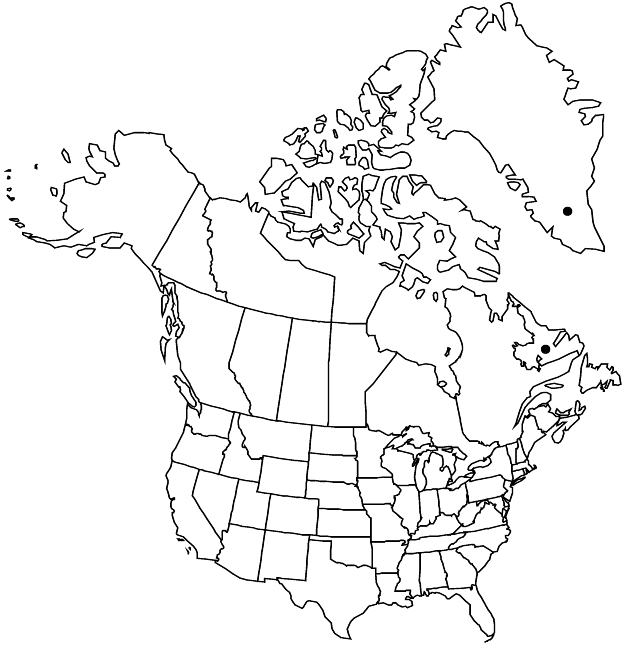Polygonum aviculare subsp. boreale
Svensk Bot. Tidskr. 91: 249. 1998.
Plants green, homophyllous or subheterophyllous. Stems 1–7, prostrate to ascending, mostly branching from base, 6–50 (–90) cm. Leaves: ocrea 3.5–7 mm, proximal part cylindric to funnelform, distal part soon disintegrating, nearly completely deciduous; petiole 7–9 mm; blade green, lateral-veins visible but not raised abaxially, obovate-spatulate or oblanceolate, (12.5–) 16–44 (–55) × (4–) 6–18 (–22) mm, 2–4 (–5.5) times as long as wide, apex obtuse to rounded; stem-leaves (1.1–) 1.3–2.5 (–3) times as long as branch leaves. Cymes uniformly distributed, rarely crowded at tips of stems and branches, (3–) 4–7-flowered. Pedicels mostly exserted from ocreae, 2–5 mm. Flowers: perianth 3.3–5.5 mm, 1.6–2.8 times as long as wide; tube 25–35 (–39) % of perianth length; tepals overlapping, green with white or pink margins, obovate, flat or curved outward in fruit, outer tepals not pouched at base; veins branched, thickened; stamens 6–8. Achenes enclosed in perianth, dark-brown, ovate, 3-gonous, (2.5–) 2.7–4 (–4.2) mm, faces subequal, concave, apex straight, coarsely striate-tubercled; late-season achenes uncommon, 4–5 mm. 2n = 40.
Phenology: Flowering Aug–Oct.
Habitat: Sandy, gravelly, or rocky coastal areas
Elevation: 0-500 m
Distribution

Greenland, Nfld. and Labr. (Labr.), nw Europe
Discussion
Selected References
None.
Lower Taxa
"/2" is not declared as a valid unit of measurement for this property.